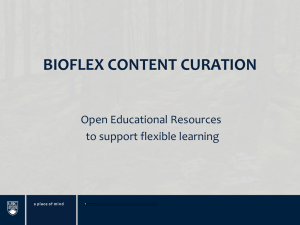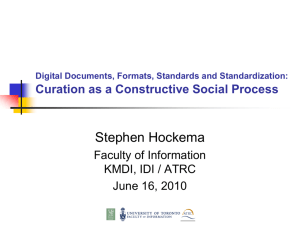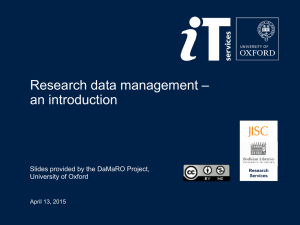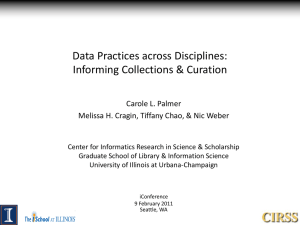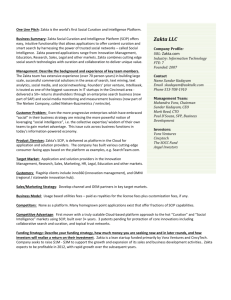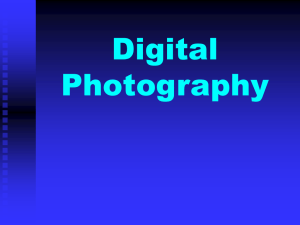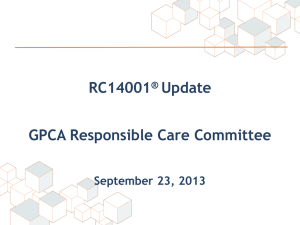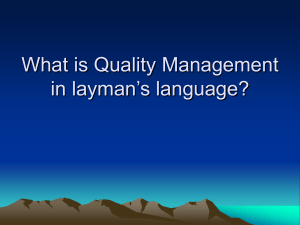Presentation - The Digital Curation Institute
advertisement
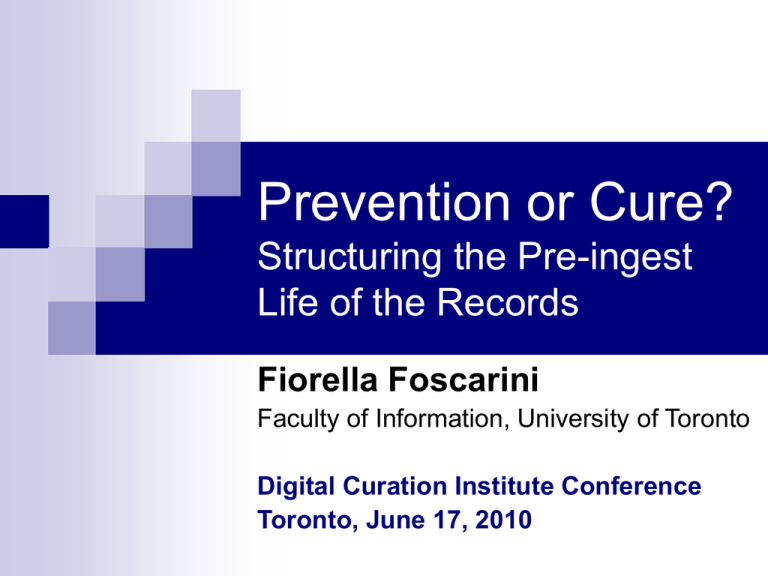
Prevention or Cure? Structuring the Pre-ingest Life of the Records Fiorella Foscarini Faculty of Information, University of Toronto Digital Curation Institute Conference Toronto, June 17, 2010 Presentation Overview Limitations of existing standards and models Inadequate understanding of structures and processes Organizations as ‘human activity systems’ Alternative approaches to the study of pre-ingest activities Three levels of analysis Three frameworks Contributions to the digital curation domain The OAIS Model The DCC’s Curation Lifecycle Model Records-related Standards and Models ISO 15489-1:2001 & ISO 15489-2:2001 ISO 23081-1:2006 & ISO 23081-2:2009 MoReq2 (2008) ICA, Principles and Functional Requirements for Records in Electronic Office Environments (2008) NAA, DIRKS Manual (2003) InterPARES 2, Chain of Preservation Model & Business-driven Recordkeeping Model (2008) … InterPARES Chain of Preservation Model ‘Hard’ Systems Thinking Structured problems Systems engineering / Systems analysis S0 = present state S1 = desired state S0 S1 Management science view of ‘business systems’ ‘Soft’ Systems Thinking Unstructured problems “A problem relating to real-world manifestations of human activity systems is a condition characterized by a sense of mismatch, which eludes precise definition, between what is perceived to be actuality and what is perceived might become actuality” (Checkland 1999) Levels of Analysis Theoretical and Methodological Frameworks MACROSCOPIC LEVEL : Organizational Activity Soft Systems Methodology MESOSCOPIC LEVEL : Conscious Human Actions Adaptive Structuration Theory MICROSCOPIC LEVEL : Minute Operations Genre Theory Soft Systems Methodology Perceived real-world problem situation leads to selection of Comparison of models with perceived situation Accommodations which enable action to improve situation Models of relevant systems of purposeful activity Debate about desirable and feasible change Conclusion “The humanities [and the social sciences] are not a problem-solving undertaking. Instead, their prime concern is to achieve understanding, to assess context-relatedness, to investigate meaning and function… In order to gain access to the domain to be charted, [one needs to] piece together observed data and elements drawn from different frameworks.” (Iser 2006)

